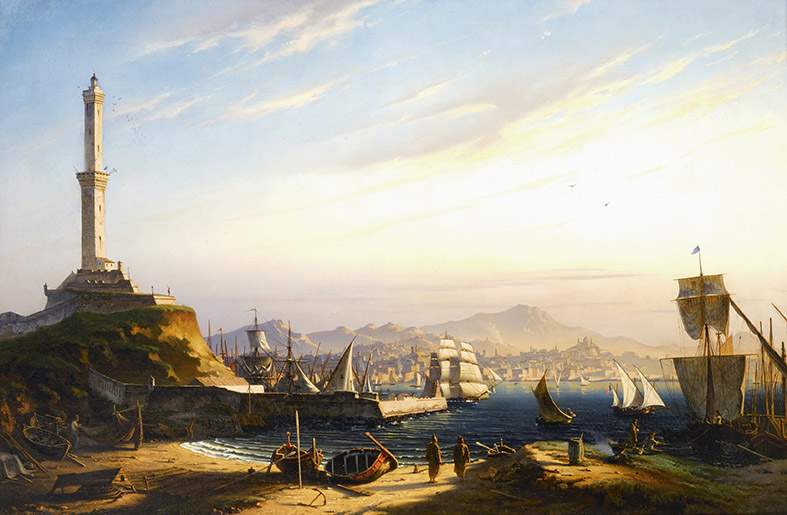Opening next October 7, and lasting until February 4, 2018, the exhibition The City of the Lantern. The Iconography of Genoa and its Lighthouse from the Middle Ages to the Present: the exhibition, which aims to illustrate the history of figurative representations of Genoa, its port and its most famous symbol, the Lantern, is held at the Falcone Theater of Palazzo Reale and is curated by Serena Bertolucci and Luca Leoncini. The exhibition’s itinerary starts from Renaissance maps and goes all the way to twentieth-century photographs, passing through the eighteenth-century painters of the Grand Tour and nineteenth-century landscapes: in all, there will be two hundred works on display, including drawings, paintings, posters and photographs, from the Genoa State Archives, municipal collections, the Carige Bank, but also from outside (from the Royal Museums in Turin, the museum of Ca’ Pesaro in Venice, the archives of all the Ligurian superintendencies and private collections).
This is the first time Genoa has dedicated an exhibition to the Lantern, its medieval lighthouse (until 1902 the tallest in the world) that marks the city’s skyline and is one of its symbols along with the banner of St. George, the patron saints, the two-faced Janus, and the Madonna Queen of Genoa. The Lantern thus appears in a vast number of maps, official documents, nautical charts, book frontispieces, and paintings. “If in common parlance Genoa, therefore, is still the city of the Lantern,” reads the exhibition presentation, “this exhibition traces the stages of one of the main leitmotifs of the Genoese landscape. From the earliest known figurative representation, the one appearing on the cover of a 1371 manual of accounts, to modern gravures. From the ancient woodcuts with ancient views of the city, to the posters with ocean liners for modern tourism. From objects that still document its primitive functionality (the oil jar used as fuel to power its brightness), to contemporary objects that consecrate its symbolic value.”
There are several sections that make up the exhibition, whose path is basically divided by themes. It starts with fifteenth-century woodcuts, continues with antique prints, and arrives at sections devoted to individual artists who dealt with the city, from locals such as Antonio Giolfi (Genoa, 1721 - 1796) and Luigi Garibbo (Genoa, 1782 or 1784 - Florence, 1869) to painters who came from outside the region, on whom the name of Ippolito Caffi (Belluno, 1809 - Lissa, 1866), a famous nineteenth-century Venetian painter of views, stands out. This is followed by sections on the Lantern as a witness to historical events, symbols of Genoa, photographs, postcards and advertising posters, and ends with the Lantern in the present.
Hours: Thursday through Saturday from 10 a.m. to 5 p.m., Sunday from 2 to 5 p.m. Admission costs 5 euros, concessions 3 euros. Free for children under 18. You can also buy a combined ticket for the Palazzo Reale Museum and the exhibition (8 euros full, 6 euros reduced). Catalog published by De Ferrari Editore (cost: 25 euros).
Image: Antoine Edmond Joinville, Entrance to the Port of Genoa.
 |
| The history of Genoa and the Lantern in pictures is on display at the Royal Palace |
Warning: the translation into English of the original Italian article was created using automatic tools. We undertake to review all articles, but we do not guarantee the total absence of inaccuracies in the translation due to the program. You can find the original by clicking on the ITA button. If you find any mistake,please contact us.